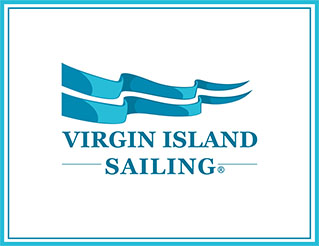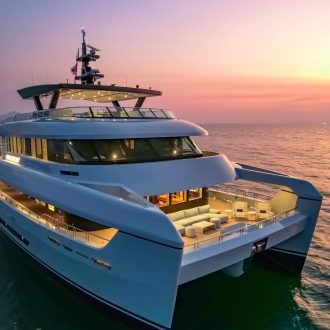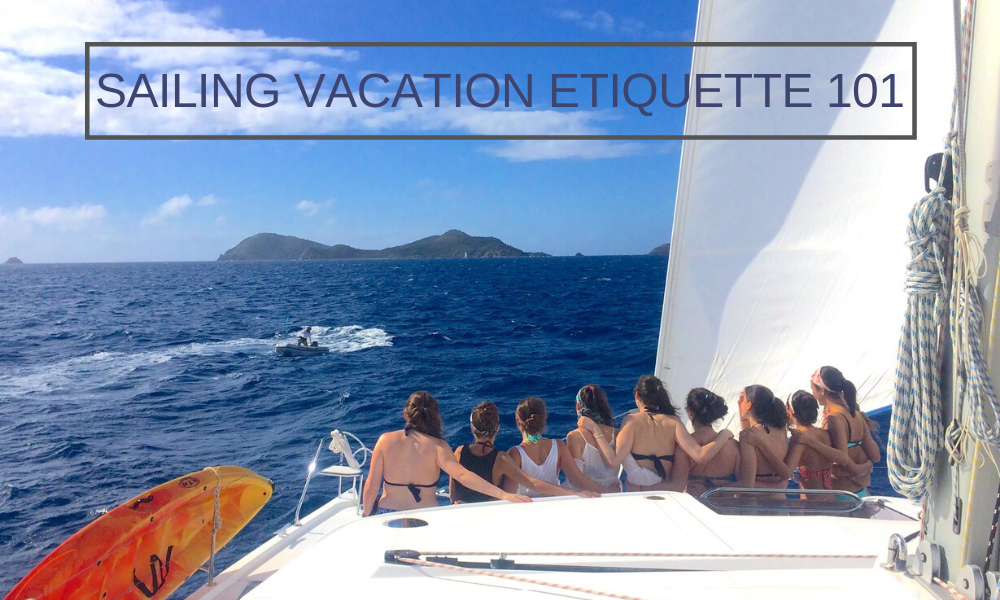
If you have never taken a sailing vacation, you are in for a treat. There is something magical the first time your sails fill with wind and you find yourself gliding through the turquoise blue waters of the Sir Francis Drake Channel off the coast of Tortola, BVI.
There is nothing more peaceful or relaxing than sailing on a catamaran surrounded by the ambiance of nature’s pristine worldwide destinations. Virgin Island Sailing® can make all the charter arrangements for your dream sailing vacation.
Most people are introduced to the thrill of sailing because they can’t resist someone else’s enthusiasm for the experience. With the most patient guidance of others’ teaching, there are still some things that can be puzzling. For instance, tying a bowline, why a rope is called a line – unless it is a mainsheet or halyard, or why the bathroom is called the head.
Despite this, you can quickly master some lessons for life onboard before ever taking your first Caribbean sailing vacation. In order to ensure you have a great trip, you need to remember that you are not at home. Rather, you are living aboard a sailing vessel and everyday tasks are uniquely done.
By following these simple rules of etiquette, life onboard will be as easy as soaking up the sun off the magnificent azure blue waters or fabulous white sandy beaches of the Caribbean, Mediterranean or South Pacific.
Lessons For Using the Head (aka The Bathroom)
Head lessons involve teeth brushing, showering, and using the toilet. The main thing to understand is that fresh water is held in tanks below deck. Thus, there are limited gallons of water that can be carried on your sailing vacation.
Refilling the tanks takes time away from the fun, as well as the availability of freshwater can be limited on the islands. Therefore, “less is best” applies to fresh water usage.
In terms of teeth brushing, you cannot let the faucet run while you brush. It just wastes too much water. Simply wet your brush, turn off the water, brush, and then turn on the water again to rinse. Easy!
If you are like many who enjoy long, hot showers when at home, you will still have hot showers onboard. Just not long ones unless you want to make the rest of your party really mad when there is no water left.
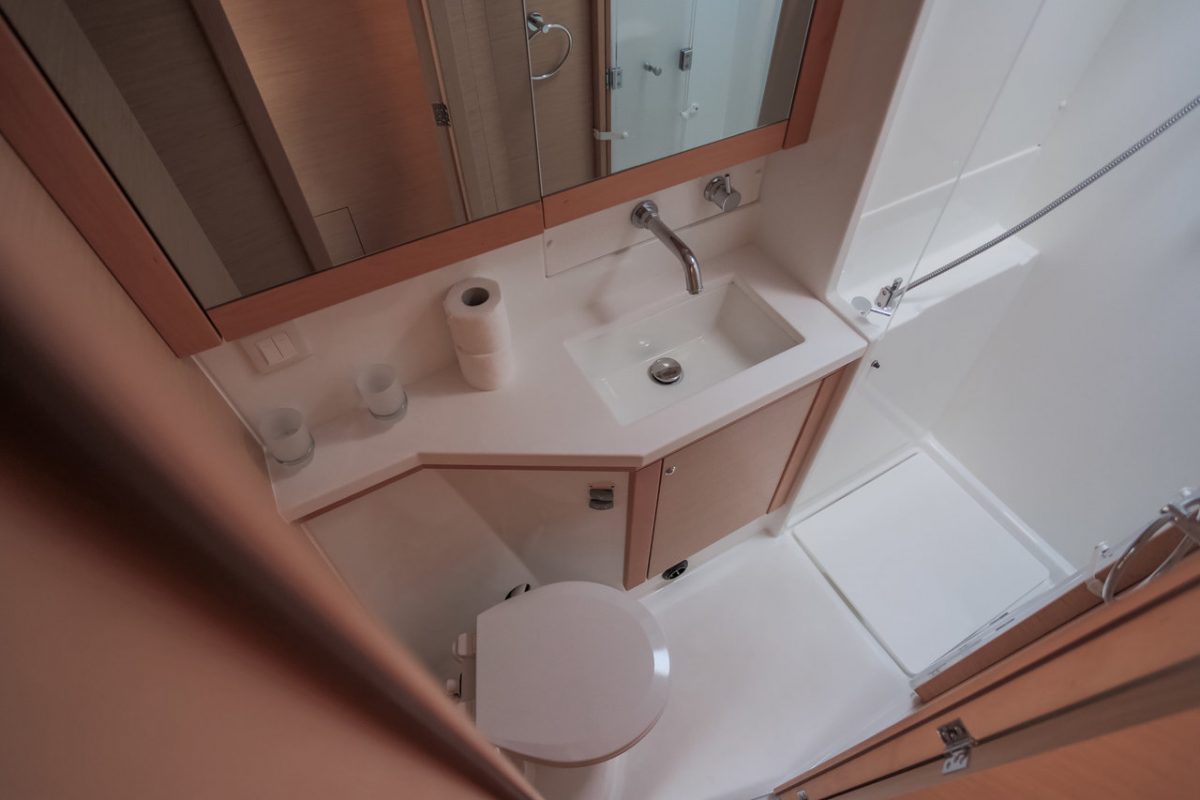
In some sailing vessels, the shower is just a pull-out extension hose on the water faucet. This is called a “wet head” because while you shower, the rest of the bathroom also gets wet. Be sure to store away anything that needs to stay dry!
The water is heated up every time the engine runs, so if you have sailed all day, you may need to run the engine for about an hour if you want a scalding hot shower.
In many catamarans these days, there is actually a walk-in shower with a divider so the entire bathroom doesn’t get wet when you shower. This is called a “dry head.”
Make sure the head door is closed before you start your shower or you will soak your cabin. Like teeth brushing, you cannot leave the water running. Turn the water on and get wet, then turn the water off. Lather up with your soap or shampoo, and then turn the water back on just to rinse.
There will be a pool of water at your feet, but during your boat orientation when you pick up your sailing vessel, you will learn how to operate the shower pump prior to your departure.
All you really need to do is make sure the shower bilge pump is turned on at the navigation station. Then, somewhere in the head, you will find a button to press that will drain the water from the floor. Continue holding it until you hear the drain start sucking air.
As an alternative, you can take what is known as the “Joy Shower.” Many sailors actually prefer this method when they are on a sailing vacation because they find it so refreshing in the warm Caribbean waters. All you do is jump into the sea. When you are done splashing around, climb up on the ladder or sit on the platform on the back of the boat. Lather up with soap.
Jump back in to remove the soap and then rinse with the fresh water shower located in the back of your sailing vessel. For something, no bigger than an airline toilet, the marine head can be somewhat intimidating for the first time cruiser on a sailing vacation.
First timer sailors can be determined to wait until going ashore to “go”, but as the saying goes, “the best laid plans….”
A major rule is that only two things are ever flushed: 1) toilet paper – small amounts at a time, and 2) that which has already been eaten. Anything else can and will clog it up, and the only way to remedy that is to take the toilet apart, which is not a pleasant job!
There are two types of flushing mechanisms on board. Depending on the yacht you chartered, the heads will either be a manual flush or an electric flush.
Before using the manual flush head, pull the lever on the side of the toilet to the water symbol and pump some clean water into the bowl. After using, pump the lever until the bowl is flushed clean. Sometimes the pump works hard. A couple drops of vegetable oil in the bowl may help with the action. Keep pumping the lever 10-15 times more to flush any sewage right through the system. Next flip the lever to the dry side and pump the bowl dry or nearly dry.
For electric pump flushing heads, you will simply need to hold the flush button until the water runs clear.
Although this may be a delicate subject, the reality is, that on occasion, there may be some waste that is hard or is what the kids refer to as, “a log”. If you have a piece of waste that does not want to go down, pull out the faucet hose from the sink and run a bit of hot water into the bowl. This usually breaks up or melts large/hard pieces sufficiently to be able to flush.
This leads to the most important etiquette tip: Always make sure you are using the holding tanks while in anchorages so that the waste doesn’t deposit directly into the sea where people are swimming.
During your yacht orientation you will be instructed on when to use the holding tanks and when to release the blackwater (away from shore.) Occasionally, on a sailing vacation, there may be a small leak in the head seals. This allows sea water to back up into the head bowl. It is really no problem, except that it sometimes looks like someone forgot to flush. Simply pump it out.
Lessons for Trash Storage/Disposal
The beauty of sailing vacation destinations worldwide is the pristine condition of the water and beaches surrounding the islands.
Imagine what it would look like if every cruiser on a sailing vacation dumped their trash overboard. Trash storage and disposal is actually relatively simple.
First, in terms of storage, any plastic grocery bags can be used to store small amounts of trash. This includes cans, bottles, and assorted food debris since there are no garbage disposals onboard. When full, these small plastic bags can be placed in larger plastic kitchen trash bags.
These trash bags can be stored inside a storage locker until you are ready to dispose of them.
There are two ways to dispose of your trash. One way is to throw the bag in the dingy and take it ashore with you for disposal in a dumpster. Many anchorages have such dumpsters specifically designated for cruisers’ trash. Another way is that there are often garbage pickups in the various anchorages. A local will pull up alongside your boat and for a couple dollars will take your trash ashore for you.
Lessons for Using the Refrigerator
All charter boats have refrigerators that cool when the engine is operating. Thus, it is important to run the engine for a short time twice a day. The amount of time to run the engines for adequate refrigerator use will be reviewed during your yacht orientation.
At other times, the refrigerator essentially operates like a large cooler. It stays cold by placing blocks or bags of ice in the bottom and then placing the food on top. Therefore, unlike home, you cannot stand with the hatch door open deciding what you want to eat because too much cold air will escape.
Thus, you need to know what is in the refrigerator and what you want to eat. It is also a good habit to ask anyone else in your party if they want something to eat to avoid excess cold air escaping.
Most sailboats and catamarans are also equipped with a cooler in the cockpit that you will use for drinks and ice – you’ll likely replenish your ice supply every other day when going ashore to explore. This also helps keep the cold air in the refrigerator during your sailing vacation.
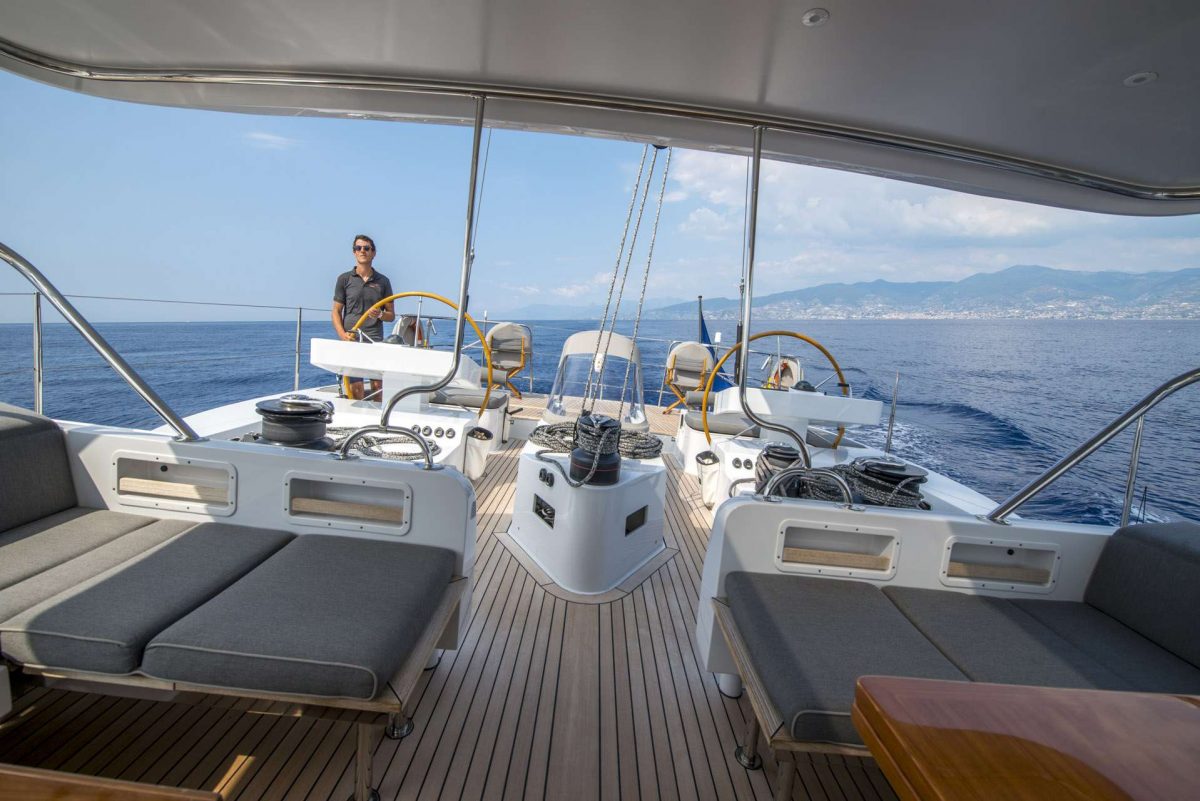
Lessons for Keeping the Vessel Clean
Since you are sharing a relatively small, living space with others, during your sailing vacation, it is really important to be considerate of common areas.
First, do not place wet towels or clothes on cushions or on interior floors. It makes it unpleasant to sit and can be dangerous if floors are slippery.
Second, if your shoes are sandy from trips ashore, leave them in the cockpit rather than track sand all over the deck or into the cabins. Many charterers will start their day by taking a bucket of seawater and rinsing the cockpit floor to remove any dirt/sand.
Third, if you hang clothes or towels on the rails to dry, remove them once they are dry. The longer your items hang outside, the more chance they will get wet again from a cool rain shower.
Finally, make sure any loose items are stowed away when not in use. This prevents items flying when your sails fill with wind, and it keeps the cabins and salon from being overly cluttered.
Following these simple lessons will make your life onboard safe, easy and fun. If you have questions, the Charter Experts at Virgin Island Sailing® will be glad to assist you.
The most important thing is to enjoy the sun, sea and the exciting adventure of taking a sailing vacation!
